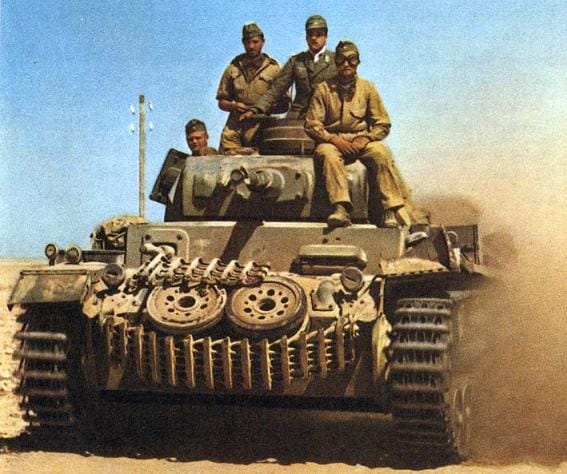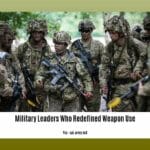From Czechoslovakia to the Sands of Africa: The 10th Panzer Division’s Origins
While Erwin Rommel, the “Desert Fox,” often takes center stage in narratives about the North African Campaign, the 10th Panzer Division played a crucial, yet often overlooked, role in the Afrika Korps. This article delves into the division’s formation, its diverse contributions to the campaign, and the lasting legacy of this formidable unit.
Formed in Prague in April 1939, the 10th Panzer Division was initially classified as a “light” division. However, its arsenal of Panzer I, II, and III tanks, coupled with mobile artillery and support units, quickly revealed its true strength. The division’s first test came in September 1939 during the invasion of Poland. Attached to Army Group North, the 10th Panzer Division participated in the decisive Battle of the Bzura, effectively proving its combat prowess. This early success earned Generalmajor Ferdinand Schaal, the division’s commander, the prestigious Knight’s Cross of the Iron Cross.
Following the Polish campaign, the 10th Panzer Division was redeployed to the Western Front. In May 1940, they participated in the invasion of France, engaging in fierce combat during the Battle of Dunkirk. A year later, in June 1941, the division found itself embroiled in Operation Barbarossa, the invasion of the Soviet Union. As part of Army Group Center, the 10th faced the brutal realities of the Eastern Front at the Battle of Smolensk.
A New Battlefield: The 10th Panzer Division Joins the Afrika Korps
The Eastern Front proved to be a grueling test for the 10th Panzer Division. Suffering heavy casualties and equipment losses, the division was withdrawn to France for refitting and reorganization. By June 1942, the division had earned its place in the annals of military history – they were reassigned to North Africa to bolster the Afrika Korps.
Arriving in North Africa, the 10th Panzer Division encountered a new set of challenges: navigating vast, featureless terrain and adapting to the harsh desert climate. Their initial role was to act as a rapid reaction force, plugging gaps in the line and responding to enemy breakthroughs. However, the division’s role soon expanded, showcasing its adaptability and tactical flexibility.
Forging a Legacy in the Desert Crucible: Key Engagements and Tactical Prowess
The 10th Panzer Division’s arrival in North Africa coincided with a critical juncture in the campaign. Rommel’s forces had suffered a setback at the Battle of Gazala in June 1942, and the division was quickly thrown into action. During the Gazala battles, the 10th Panzer Division demonstrated its ability to exploit gaps in enemy lines, rapidly advance, and overwhelm less mobile defenses.
The division was instrumental in the Axis victory at Gazala, showcasing its capacity for both offensive operations and rapid exploitation of breakthroughs. Their performance highlighted the division’s tactical acumen and the effectiveness of German armored doctrine in the desert.
Following Gazala, the 10th Panzer Division played a significant role in the First and Second Battles of El Alamein (July and October 1942). As the tide of the campaign began to turn, the division transitioned from offensive operations to a more defensive role, holding vital positions against determined Allied counteroffensives. The battles of El Alamein became a brutal test of endurance and tactical skill for the 10th Panzer Division, where they fought with tenacity despite facing overwhelming numerical superiority.
Voices from the 10th Panzer Division: Personal Accounts of Desert Warfare
The experiences of the 10th Panzer Division in North Africa were documented in countless letters, diaries, and postwar memoirs written by soldiers who served in the unit. These firsthand accounts provide valuable insights into the realities of desert warfare, the constant struggle against the elements, and the camaraderie forged among soldiers facing extreme adversity.
Soldiers’ accounts highlight the challenges of maintaining equipment in harsh desert conditions. Sandstorms, scorching heat, and limited access to water and spare parts constantly hampered operations. The ingenuity and resourcefulness of the division’s mechanics and support crews became crucial to keeping the tanks and vehicles operational.
Despite the hardships, veterans of the 10th Panzer Division often recalled the strong bonds of camaraderie that developed within the ranks. The shared dangers and the constant reliance on each other for survival created a sense of brotherhood that transcended the brutality of war.
The 10th Panzer Division: Legacy of a Desert Fox
The 10th Panzer Division’s time in North Africa ended with the eventual defeat of the Afrika Korps in May 1943. Despite the surrender, the division’s performance throughout the campaign solidified its reputation as a capable and resilient fighting force.
While the “Ghost Division” moniker was attributed to the 7th Panzer Division under Rommel’s command, the 10th Panzer Division earned its own place in military history. Their combat record in North Africa stands as a testament to the skill, adaptability, and sheer determination of the soldiers who served under the division’s banner.
Key Takeaways:
- The 10th Panzer Division was a highly decorated and experienced unit that served in some of the most important campaigns of World War II.
- The division’s deployment to North Africa demonstrates the fluid nature of warfare during this period and the strategic importance of this theater.
- Studying the 10th Panzer Division offers insights into the challenges of desert warfare, the tactical evolution of armored units, and the significance of individual experiences in understanding military history.
- While often overshadowed by Rommel’s legend, the 10th Panzer Division in North Africa deserves recognition for its crucial contributions to the Afrika Korps and its enduring mark on military history.
- Red Cloud, NE: Discover Willa Cather’s Legacy - April 11, 2025
- Remember Old Social Media Sites? Their Rise and Fall - April 11, 2025
- How many days till Feb 3?Accurate Countdowns & Tools - April 11, 2025
















